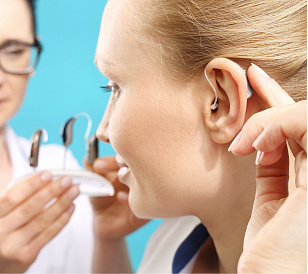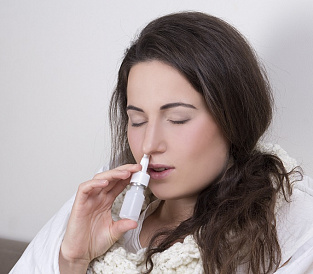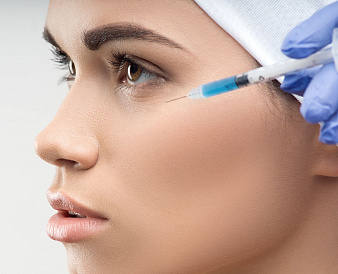6 best iron supplements
According to WHO, more than 2 billion people in the world suffer from anemia caused by iron deficiency. Most of them are women and children. In Russia, 12% of women of childbearing age have anemia, and almost half of fertile women suffer from latent iron deficiency. The reason for this is the peculiarities of female physiology in combination with insufficient intake of the element with food. Among children, every third person has either clinically expressed anemia or a latent iron deficiency.
In the body it comes from food, but is absorbed quite poorly, especially from plant products. If a person can absorb up to 20% of iron from meat, then from plants - no more than 5%. That is why the WHO considers vegetarians to be at risk for pregnant iron deficiency anemias and recommends them to take iron preparations for prophylactic purposes from the earliest periods. Perhaps this is the only group of people who are prescribed such drugs for prevention.
Another group that they might need is women with heavy menstruation. Their daily need for iron is 3 mg, whereas no more than 2 mg of this substance can be absorbed per day with food. But in practice, if the iron deficiency has not yet developed, for its prevention it is enough vitamin-mineral complex with iron content - even in low-cost domestic "Complivit" there is 5 mg of this element.
Therefore, diagnosed anemia, a deficiency of hemoglobin in the blood, usually becomes an indication for the use of iron preparations.
Signs of iron deficiency in the body
Most of the iron in the body is in the form of hemoglobin - a special substance that binds oxygen from the air and releases it into the tissue, instead of removing carbon dioxide from them. Therefore, the amount of iron in the blood is often judged by the level of hemoglobin. The normal hemoglobin content in the blood for men is 130–170 g / l, women 120–150 g / l (during pregnancy, the rate drops to 110–140, since blood thinates during this period), for children from one year to 14 years old - 110 –150 g / l.
But in practice, normal hemoglobin levels do not guarantee a normal iron content in the body. Full oxygen metabolism is vital for all organs and systems: the brain dies without oxygen in 5-6 minutes. The body will by all means maintain a normal level of hemoglobin until all reserves have been exhausted. Therefore, iron deficiency is usually judged by other indicators.
|
indicator |
norm for women |
norm for men |
|
ferritin |
10–120 µg / l |
20–250 mcg / l |
|
transferrin |
2–4 g / l |
2–4 g / l |
|
% transferrin saturation |
15–50 |
20–55 |
|
serum iron |
80.9–30.4 μmol / l |
11.6–30.4 μmol / l |
A reduction in any of these indicators indicates a latent iron deficiency in the body.
As the problem grows, there are signs that can be detected independently:
- dry, splitting hair, excessive hair loss;
- brittle nails
- “Stuck” in the corners of the lips, cracks, dry skin around the mouth;
- sleep disturbance: daytime - drowsiness, sleeplessness at night;
- tongue becomes smooth, nipples disappear;
- the perversion of taste - the desire to eat chalk, earth, rubber and other inedible things;
- fatigue, muscle weakness.
These symptoms are associated with a lack of a macroelement in the tissues: it is necessary not only for normal oxygen metabolism, but also for muscles (15% of the body's entire iron is contained in the muscle protein of myoglobin), and many metabolic processes.
Top Iron Formula Rating
| Nomination | a place | Name of product | price |
| The best iron supplements for pregnant women | 1 | Totem | 505 ₽ |
| 2 | Ferro – Folgamma | 259 ₽ | |
| 3 | Fenulas | 280 ₽ | |
| 4 | Gino-tardiferon | 190 ₽ | |
| The best iron supplements for children | 1 | Maltofer drops | 254 ₽ |
| 2 | Ferrum-Lek syrup | 140 ₽ |
The best iron supplements for pregnant women
As already mentioned, up to 50% of women of childbearing age have a hidden iron deficiency. After pregnancy, the situation worsens. 320–500 mg of this substance is used to increase hemoglobin and increased cellular metabolism, 100 mg to build the placenta, 50 mg to increase the size of the uterus, 400–500 mg to the needs of the fetus. Thus, an additional 1200–1140 mg of iron is consumed during the entire pregnancy. It is especially actively spent on the 16–20 week of pregnancy, when the hematopoiesis process starts in the fetus. By this time, the woman's daily need for iron increases to 6 mg per day.
For the prevention of iron deficiency, as already mentioned, it is usually enough vitamin-mineral complexes. But if anemia has already developed, the necessary dosages of iron become much higher: from 100 to 300 mg per day.
Choosing the best iron supplements to be included in the rating, we followed the WHO recommendations, according to which for the treatment of anemia, including in pregnant women, products containing ferrous iron are preferable. It is in this form that it is best absorbed in the gastrointestinal tract. For home use, oral (for oral administration) is better than injectable. Firstly, in order to use them, medical personnel or people with special skills are not needed, and secondly, the likelihood of post-injection complications is excluded. Therefore, we did not add funds for injection to the rating, leaving them to professionals working in the conditions of medical institutions.
All oral iron supplements are not recommended to be combined with food, since tea, coffee, foods rich in calcium, reduce their digestibility. For the same reason, they cannot be combined with magnesium and aluminum preparations (most of the remedies for heartburn).
It is necessary to judge the effectiveness of therapy no sooner than after 3 weeks, the duration of treatment is from one to six months: such a long period is needed for the body's depot and red blood cells to be updated (the average red blood cell lifetime is 120 days).
Totem
Rating: 4.8
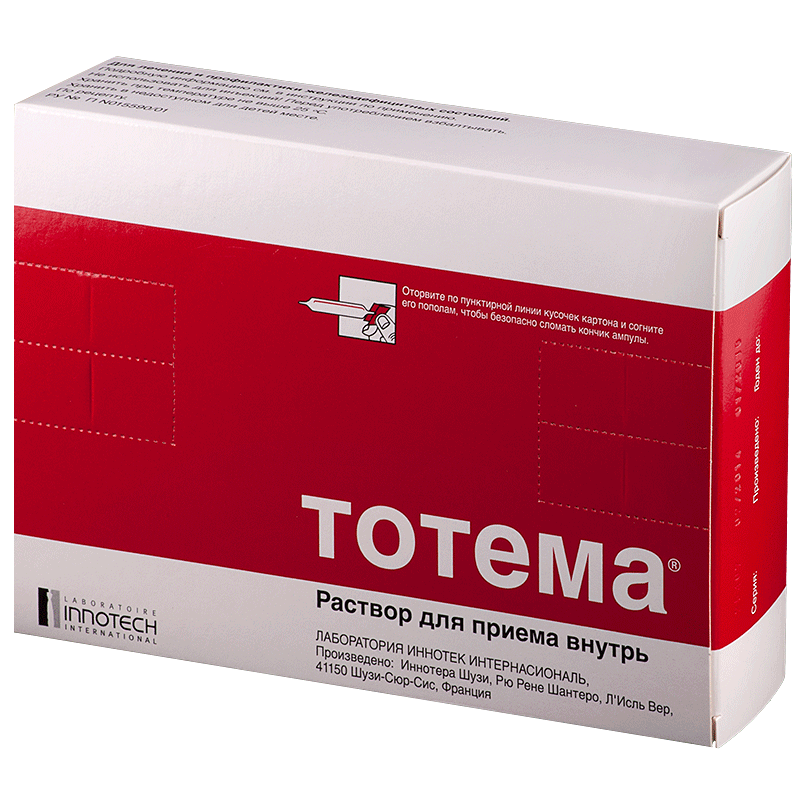
Contains iron, copper and manganese. The last two substances are needed to improve the absorption of iron: they are part of the transport proteins. In addition, they contribute to the enhancement of antioxidant protection: ferrous ions can activate the process of lipid peroxidation on the surface of the gastric mucosa and thus trigger undesirable effects (heartburn, nausea, diarrhea).
Available in the form of a solution for oral administration, which must be dissolved in a glass of water or apple juice. Per day you need from 2 to 4 ampoules. To reduce the likelihood of adverse events, it is recommended to start with the minimum dosage and gradually increase it.
Since the solution can stain the enamel of the teeth, it is better to drink it through a tube, and immediately after use to brush the teeth.
Virtues
- well digestible form
- complex composition
- affordable price.
disadvantages
- unpleasant taste
- inconvenient to open the ampoule.
Ferro – Folgamma
Rating: 4.7
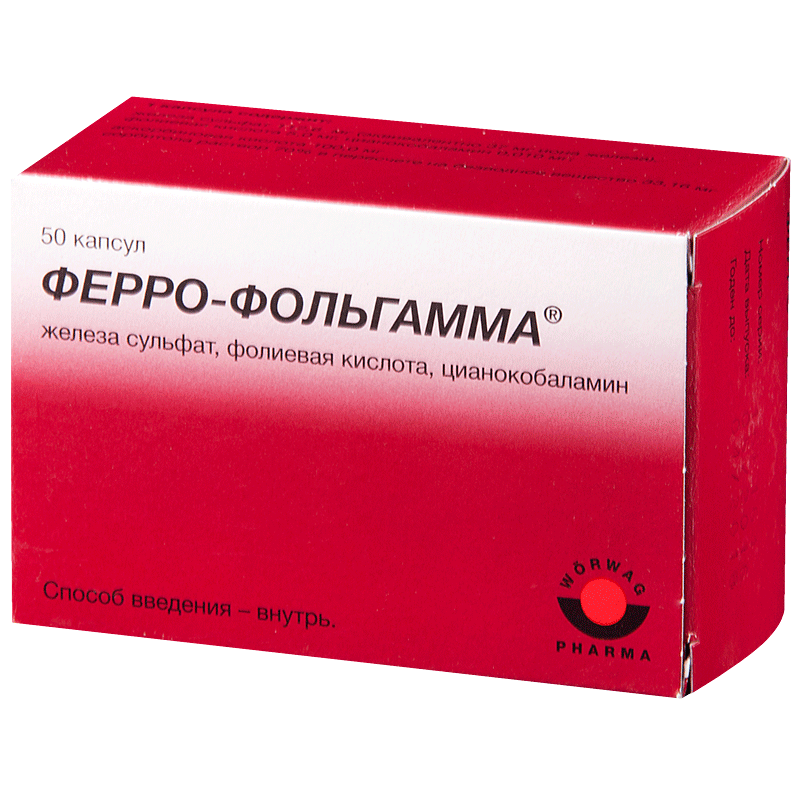
In the composition, in addition to the divalent salt of iron, cyanocobalamin (vitamin B12), folic and ascorbic acid.Vitamin B12 and folic acid improve blood formation, and vitamin C promotes better absorption of iron, and besides it is a strong antioxidant. According to doctors, this tool increases hemoglobin by an average of 2.5 mg per day, so the patient's well-being improves quite quickly. However, the treatment must be completed completely, otherwise the results will be temporary.
Available in capsules that need to be taken 1 - 2 x 3 times a day.
Virtues
- quickly normalizes hemoglobin level
- convenient release form.
disadvantages
- possible side effects.
Fenulas
Rating: 4.5
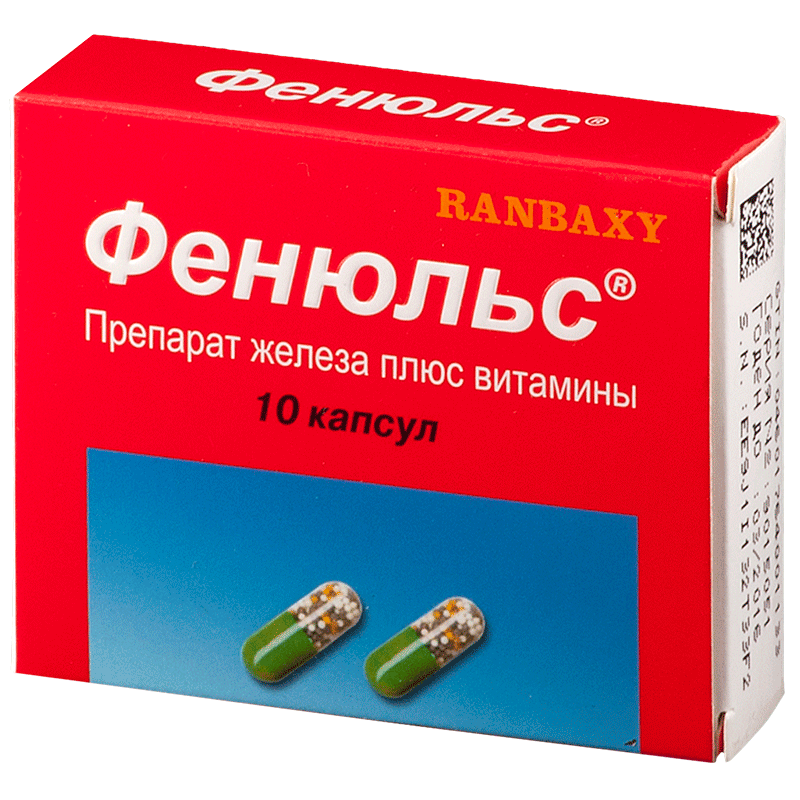
Another complex that combines ferrous iron with vitamins: contains vitamins of group B (B1, B2, B3, B5, B6), normalizing metabolism, which is often disturbed by iron deficiency; and C. Capsules medications contain microgranules, from which iron and vitamins are released gradually, which reduces irritation of the gastric mucosa and, consequently, the likelihood of side effects. Take 1 - 2 capsules per day, depending on the severity of anemia.
Virtues
- usually 1 tablet per day is enough,
- delayed absorption reduces the severity of side effects
- low price.
disadvantages
- not.
Gino-tardiferon
Rating: 4.4
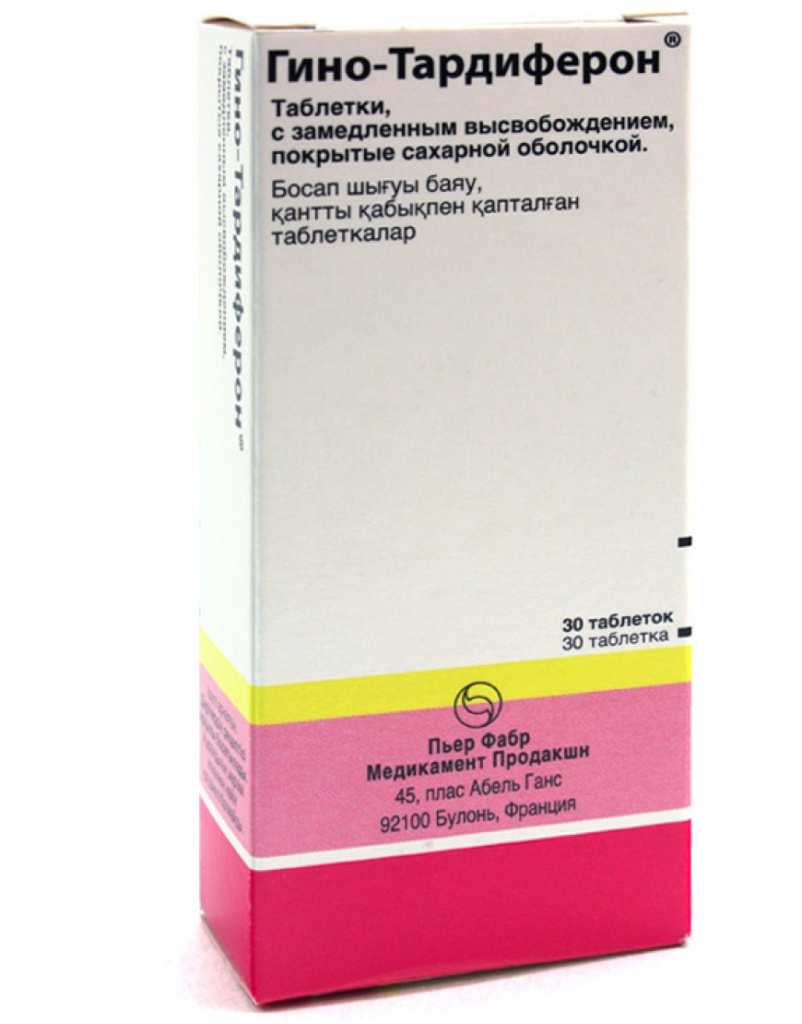
It contains iron salt and folic acid, which normalizes blood formation and the formation of the nervous system of the fetus. It is recommended for 1 - 3 tablets per day, depending on the severity of anemia. After hemoglobin is restored to normal, the dosage should be reduced to 1 tablet per day, and then, a course for 1 to 3 months that is standard for most iron preparations.
When taking iron supplements, it is necessary to remember that all of them paint the chair black, and the latent blood test done at this time gives a false positive result, since it measures precisely the iron in the feces (which normally should not be). Very carefully, such remedies should be treated by people suffering from gastritis, gastroenterocolitis and other inflammatory diseases of the gastrointestinal tract, as they irritate the mucous membrane.
The best iron supplements for children
If, when choosing a medication for adults, effectiveness and safety are primarily taken into account, then when it comes to a remedy for children, the child’s commitment to treatment comes to the fore. Not a single mother will stand for long if the medicine in the baby each time will have to be literally crammed with a fight.
There is another nuance: the release form. Tablets should not be prescribed to children under 3 years of age, and capsule medications are prohibited for children under the age of 7 for fear that the child will choke on the tablet or capsule. That is, preparations for children are drops or syrups. But bivalent iron has a pronounced metallic taste that no additives can hide - and children often refuse to take them. In addition, divalent ionic iron, with all its advantages, irritates the mucous membrane of the gastrointestinal tract, and the tender children's body reacts to it with nausea and vomiting more often than adults.
Therefore, in the ranking of the best iron supplements for children, we included products containing ferric iron - but in a special, modern form: iron hydroxide with a polymaltose complex. This is a large molecule consisting of an iron “core” surrounded by a polymaltose (polysaccharide) shell. Thus, the macro element does not directly interact with the cells of the gastrointestinal tract and does not irritate them; does not show its characteristic taste in drops, liquids and syrups; does not interact with other substances. Absorption of such iron is slower than bivalent, but on the whole digestibility is sufficient for effective therapy.
Another advantage of these drugs - they can not be poisoned due to slow absorption, and this is very important when it comes to the child.
Dosage of drugs containing iron hydroxide with a polymaltose complex: 3-5 mg of active iron per kg of body weight.A more exact guidance will be given by the attending physician: to self-medicate when it comes to children is not very reasonable.
Maltofer drops
Rating: 4.9
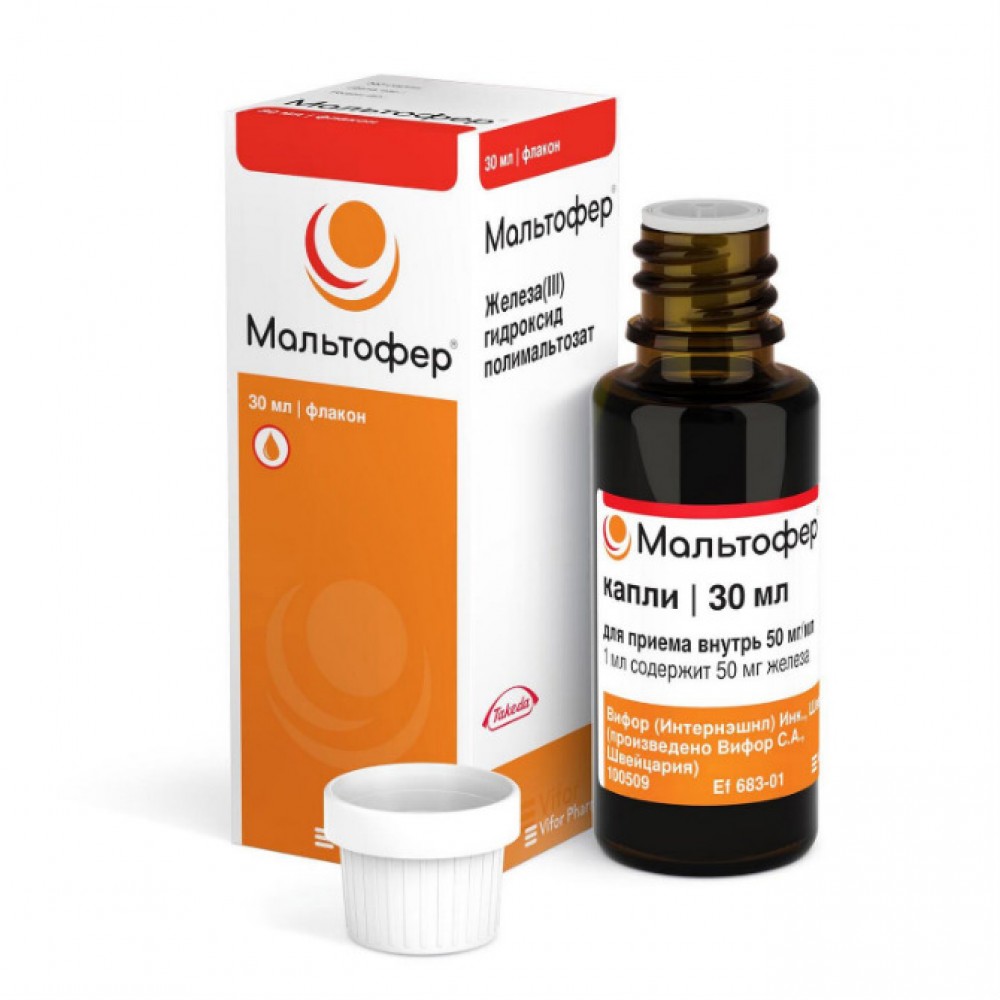
1 ml of solution (20 drops) contains 50 mg of iron, that is, 1 drop contains 2.5 mg. Thus, it is very easy to dose them: 1-2 drops per kilogram of baby weight per day, depending on the severity of anemia. The daily dose can be taken for 1 time by mixing the drops with juice or any soft drink. The tool has no age limit.
Virtues
- security,
- convenient dosage method.
disadvantages
- contains sugar
Ferrum-Lek syrup
Rating: 4.6
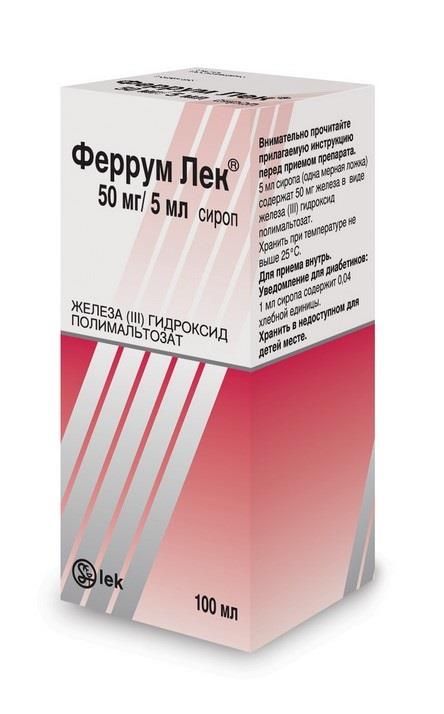
In 1 scoop of syrup - 50 mg of active iron. In the same way as the previous tool, the medicine can be mixed with any soft drink or added to baby food. Due to the fact that the minimum amount of syrup that can be measured is half a measuring spoon, the drug is not recommended for children under one year old.
Virtues
- security,
- low price.
disadvantages
- only for children older than a year.
Attention! This rating is subjective, is not advertising and does not serve as a guide to the purchase. Before buying, you should consult with a specialist.


